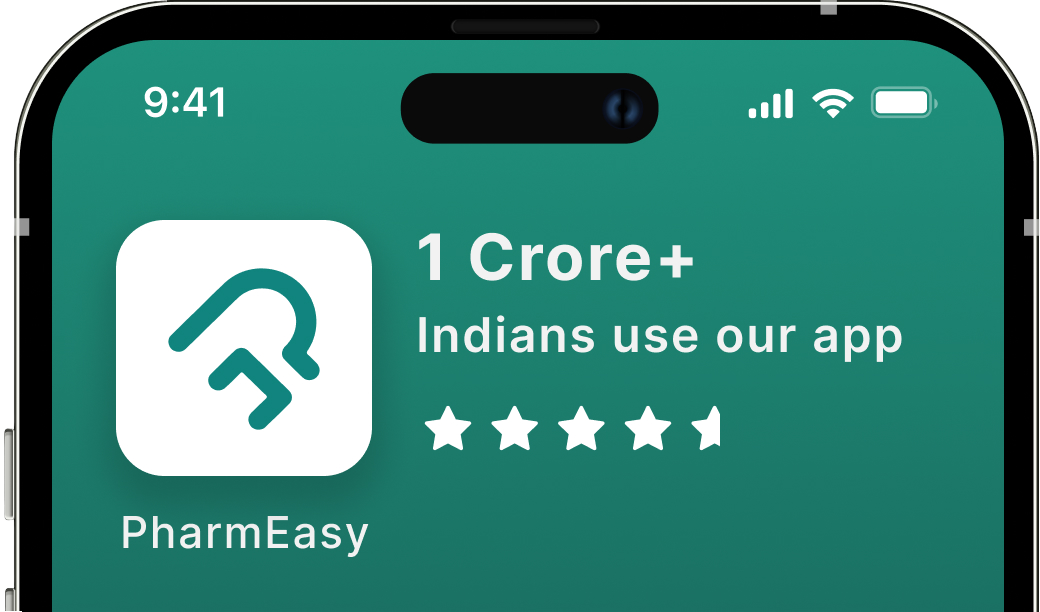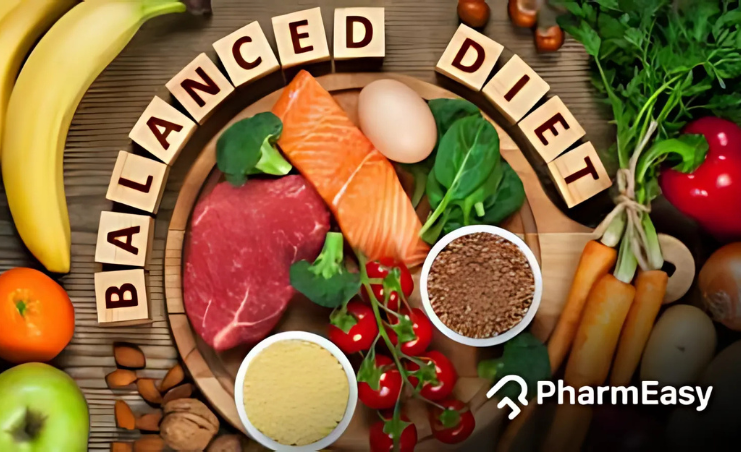Your Ultimate Guide to a Balanced Diet for Diabetes
By Dr. Arpit Verma +2 more

Get,

to manage your symptom
Get your,


4 Cr+ families
benefitted

OTP sent to 9988776655



You’ve successfully subscribed to receive
doctor-approved tips on
Whatsapp

Get ready to feel your best.

Hi There,
Download the PharmEasy App now!!


Register to Avail the Offer
Send OTPBy continuing, you agree with our Privacy Policy and Terms and Conditions

Hi There,
Sign up on PharmEasy now!!
Trusted by 4 crore+ families

OTP sent to 9988776655



You have unlocked 25% off on medicines




Code: NU25
By Dr. Arpit Verma +2 more
Table of Contents
Nutrition, exercise, and a healthy lifestyle are the 3 important pillars of diabetes management, along with the medications prescribed by a doctor. Among these, meal planning plays an important role. A well-balanced diet helps to maintain a healthy body weight and improves insulin sensitivity.
Type 2 Diabetes Mellitus is a chronic metabolic disorder affecting more than 100 million people in India[10], making it a major health concern. Diabetes occurs either due to insufficient insulin production, insulin resistance, or both, leading to high levels of glucose in the blood. Proper management of diabetes is essential to prevent complications such as vision loss, kidney failure, heart disease, and more.

If you are recently diagnosed with diabetes, it’s natural to feel overwhelmed with all the dietary and lifestyle changes. However, a good diet for diabetes is not just about restrictions but focuses more on making informed food choices that suit your taste as well as health[5].
This article will help you create a well-balanced diet to manage diabetes.
Friendly Reminder: The information shared here is for educational purposes only and the reader should consult a registered medical practitioner before implementing any changes to their health routine.
A diet is considered to be balanced when it has all the essential nutrients (both macros and micros) that the body requires to operate optimally. A balanced diet includes fruits and vegetables that contain fibre, vitamins and minerals, whole grains, proteins, and healthy fats[9].
Proteins, fats, and carbohydrates are grouped under macronutrients, and these are required by the body in larger quantities. Since macronutrients are eaten in larger portions, they tend to significantly impact blood sugar levels.
Carbohydrates
Proteins
Fats
Micronutrients include vitamins and minerals, and while they are needed by the body in smaller quantities, they are essential for the proper functioning of the body. It does not affect blood sugar levels directly but contributes to overall health by reducing inflammation, supporting the immune system, and reducing oxidative stress.
Vitamins
Minerals
A balanced diet is important as it provides essential nutrients and, at the same time, helps maintain a healthy weight, thereby reducing the risk of obesity. A balanced diet for diabetes aims at managing blood sugar levels, as it encourages the consumption of complex carbs like legumes and whole grains. The body takes some time to digest these carbs, avoiding a spike in blood sugar levels.
People with diabetes can enjoy sweets and desserts occasionally and in moderation. It is advisable to choose healthier options like dark chocolate, which has a high cocoa content. This contains less sugar. Additionally, opt for desserts that are made with fresh or frozen fruits, like fruit salads, baked apples, or some berries with yoghurt. These desserts are naturally sweet and contain fibre and nutrients.
The Diabetes Plate Method[1] is a simple way that can be used to balance meals. This method supports diabetes management while focusing on portion control.
According to the Diabetes Plate Method[3], a plate should have half of non-starchy vegetables, one-quarter of lean proteins, one-quarter of whole grains, and some fruits or dairy.
The glycemic index measures the spike in blood sugar levels after consuming a particular food. It is measured in comparison to a reference food. Foods are classified according to their glycemic index—high, moderate, and low[8].
Also Read: Low Glycemic Index Fruits for Diabetic People
Meal timing is an important part of diabetes, as this can affect the blood sugar levels. However, it is essential to note that meal timings vary from one person to the other and are also affected by insulin levels and medication.
Aim to eat meals at the same time every day, as this helps regulate blood sugar levels and the insulin response to the food. The three balanced meals – breakfast, lunch, and dinner, should be evenly spaced throughout the day.
Portion control is a key aspect of managing diabetes, and by doing so, blood sugar levels are regulated, and a healthy body weight is maintained.
As different food items affect individuals differently, there is no one-size-fits-all strategy for diabetes. It is highly recommended to consult a doctor or a nutritionist for a personalised dietary plan.
Also Read: How to Reduce Blood Sugar Level Immediately
Managing diabetes doesn’t require a one-size-fits-all diet. It’s about creating a meal plan that fits your health needs, food preferences, and lifestyle. Keep track of your blood sugar levels and body weight to understand how your meals affect your health. Eat well-balanced, nutritious meals that can help regulate blood sugar and support a healthy weight. If you’ve been diagnosed with diabetes, work closely with your doctor to stay on track.
Also Read: 11 Ways In Which Sugar Harms The Body!
Disclaimer: The information provided here is for educational/awareness purposes only and is not intended to be a substitute for medical treatment by a healthcare professional and should not be relied upon to diagnose or treat any medical condition. The reader should consult a registered medical practitioner to determine the appropriateness of the information and before consuming any medication. PharmEasy does not provide any guarantee or warranty (express or implied) regarding the accuracy, adequacy, completeness, legality, reliability or usefulness of the information; and disclaims any liability arising thereof.
Comments

Leave your comment...
You may also like
Comments